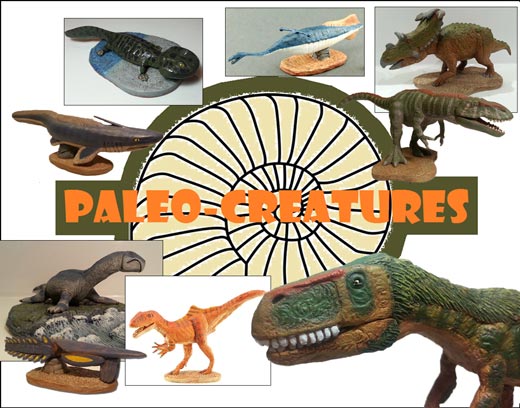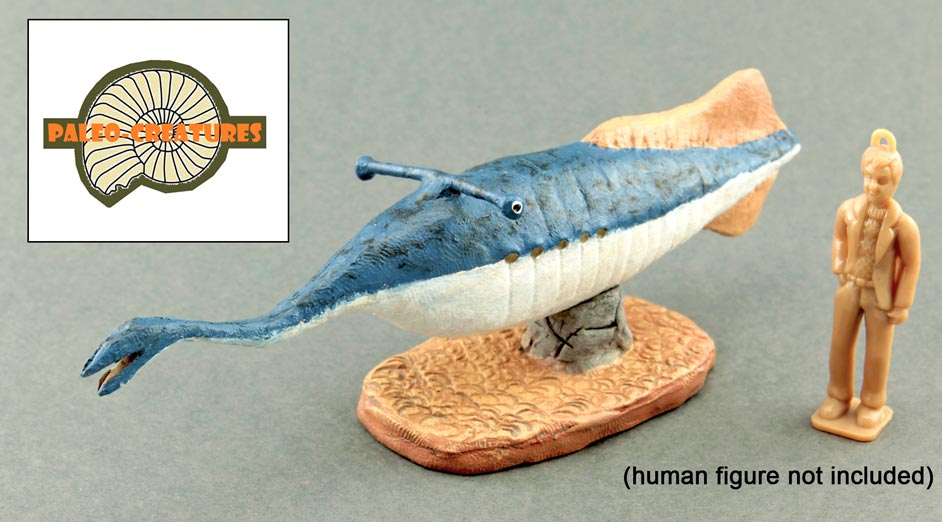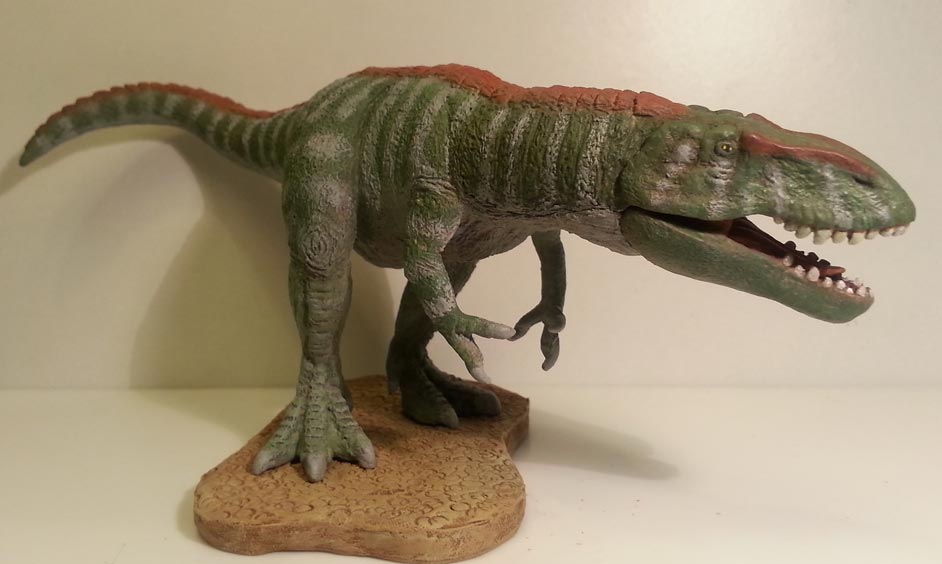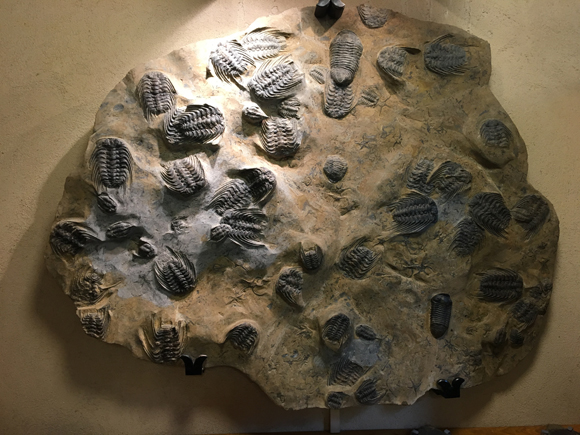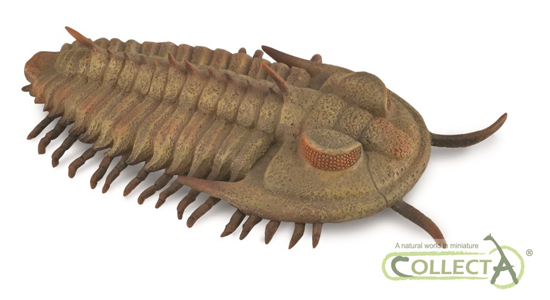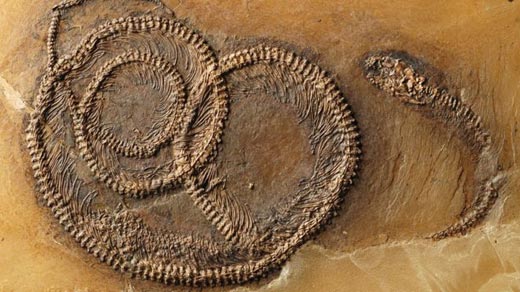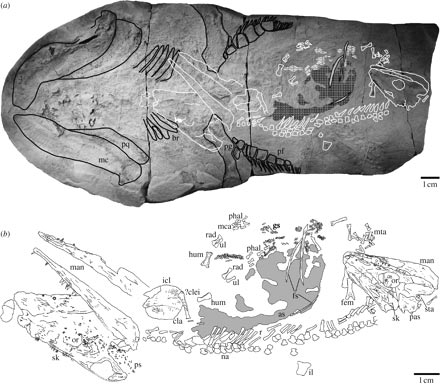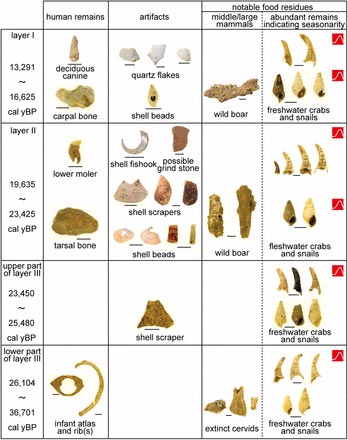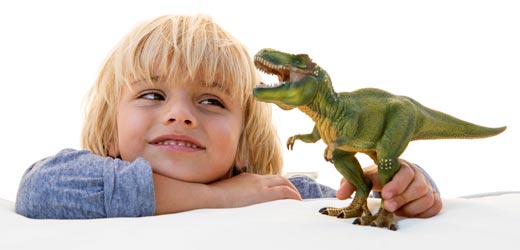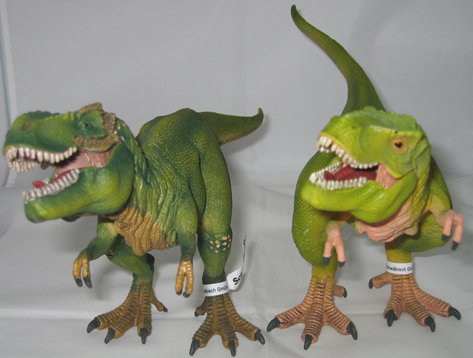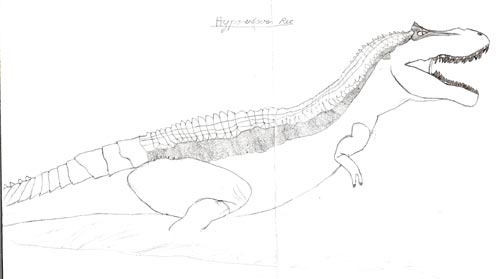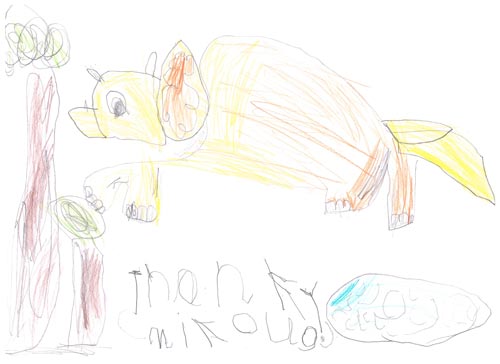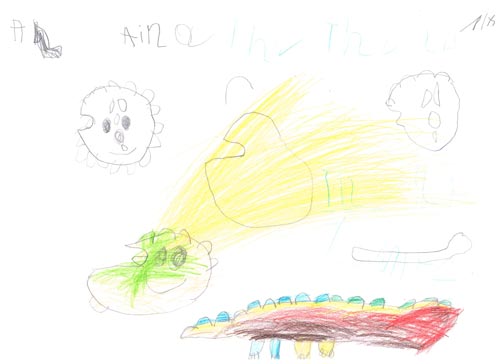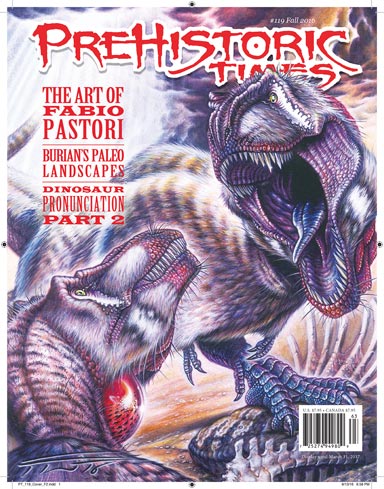Colour, Camouflage and Countershading in Dinosaurs
It turns out that the little dinosaur Psittacosaurus (parrot lizard), was light underneath and darker on its back. This colour pattern, known as countershading is a common form of camouflage in extant animals. Scientists including researchers from Bristol University conclude this in a new study of a beautifully preserved Psittacosaurus specimen currently on public display at the Senckenberg Museum of Natural History in Germany. The study has been published in the academic journal “Current Biology”.
Calculating the Colour of Psittacosaurus
Reconstructing the Colour of Psittacosaurus

Physical reconstruction of Psittacosaurus with original colour patterns.
Picture credit: Jakob Vinther and Bob Nicholls
Knowing the potential colour of an animal gives clues to its probable habitat. The research team postulate that this little herbivore lived in an environment with diffuse light, such as in a forest. To test this idea, a three-dimensional model of this Early Cretaceous dinosaur was created, step forward the very talented Bob Nicholls who has made a number of prehistoric animal models before for various museums and exhibitions.
A Superb Fossil Specimen
The specimen on display at the Senckenberg Museum of Natural History, most likely originates from the Yixian Formation of Liaoning Province, China. The fossil was illegally exported from China, in violation of Chinese law, but was purchased by the German museum.
The Fossilised Skeleton of Psittacosaurus (Senckenberg Museum of Natural History)

Psittacosaurus, early Cretaceous (120 million years old), preserving skin with colour patterns, Senckenberg Museum, Frankfurt, Germany.
Picture credit: Jakob Vinther and Robert Nicholls
Evidence of Countershading with Psittacosaurus
One of the authors of the new scientific paper, Dr Jakob Vinther (School of Earth Sciences and Biological Sciences, Bristol University) stated:
“The fossil, preserves clear countershading, which has been shown to function by counter-illuminating shadows on a body, thus making an animal appear optically flat to the eye of the beholder.”
Behavioural ecologist and co-author of the study, Professor Innes Cuthill from the School of Biological Sciences, added:
“By reconstructing a life-size 3D model, we were able to not only see how the patterns of shading changed over the body, but also that it matched the sort of camouflage which would work best in a forested environment.”
Countershading most likely served to protect Psittacosaurus, a facultative biped and a member of the bird-hipped dinosaur group (ornithischians), against predators that use patterns of shadow on an object to determine shape, just as we humans do.
Dr Vinther realised that structures previously thought to be artefacts or dead bacteria in fossilised feathers were actually “melanosomes,” small structures that carry melanin pigments found in the feathers and skin of many animals. In some well-preserved specimens, such as the Psittacosaurus the researchers worked on in the new study, it is possible to make out the patterns of preserved melanin without the aid of a microscope.
The Distribution of Countershading
Professor Cuthill and colleagues at Bristol had also been exploring the distribution of countershading in modern animals. But it was no easy matter to apply the same principles to an extinct animal that had been crushed flat and fossilised. To explore this idea further they teamed up with local palaeoartist, Bob Nicholls in order to reconstruct the remarkable fossil in to a physical model which, they say, is the most scientifically accurate life-size model of a dinosaur with its real colour patterns.
Days of careful studies of the fossil, taking measurements of the bones, studying the preserved scales and the pigment patterns, with input on muscle structure from Bristol palaeontologists Professor Emily Rayfield and Dr Stephan Lautenschlager, led to months of careful modelling of the dinosaur.
Bob Nicholls explained:
“Our Psittacosaurus was reconstructed from the inside-out. There are thousands of scales, all different shapes and sizes, and many of them are only partially pigmented. It was a painstaking process but we now have the best suggestion as to what this dinosaur really looked like.”
Investigating the Environment
In order to investigate what environment the psittacosaur had evolved to live in, Dr Vinther, Bob Nicholls and Professor Cuthill took another cast of the model and painted it all grey. They then placed it in the Cretaceous plant section of Bristol Botanic Garden and photographed it under an open sky and underneath trees to see how the shadow was cast under those conditions. By comparing the shadow to the pattern in the fossil they could then predict what environment the psittacosaur lived in.
Psittacosaurus in the Bristol Botanic Garden
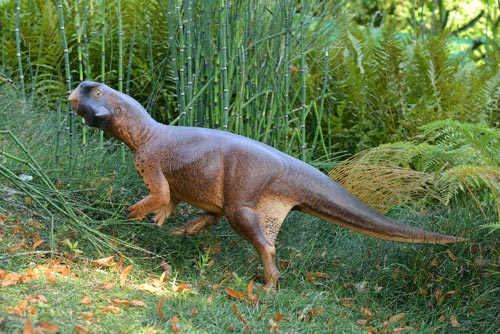
Psittacosaurus photographed in the Bristol Botanic Garden.
Picture credit: Jakob Vinther
Living in a Forest Environment
Dr Vinther stated:
“We predicted that the psittacosaur must have lived in a forest. This demonstrates that fossil colour patterns can provide not only a better picture of what extinct animals looked like, but they can also give new clues about extinct ecosystems and habitats. We were amazed to see how well these colour patterns actually worked to camouflage this little dinosaur.”
Psittacosaurus, which Professor Cuthill describes as “both weird and cute, with horns on either side of its head and long bristles on its tail”, lived in the Early Cretaceous of China and has been found in the same rock strata where many feathered dinosaurs have been discovered. A number of species have been assigned to the Psittacosaurus genus, more species assigned to this genus than in any other genus of the Dinosauria.
Congratulating the Researchers
Everything Dinosaur congratulates the researchers for this most insightful study and also acknowledges the efforts of the design team at the model maker CollectA for producing such an accurate representation of Psittacosaurus in the company’s dinosaur model range.
The Accurate CollectA Psittacosaurus Dinosaur Model
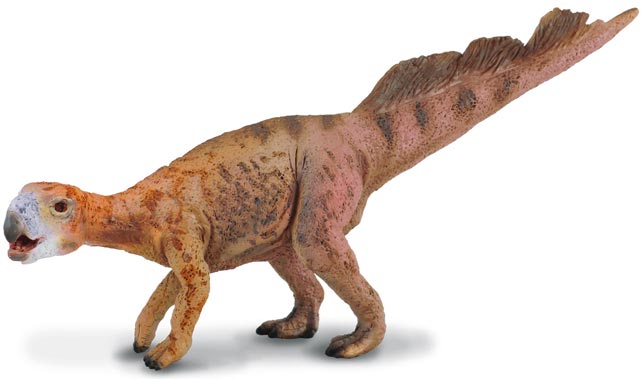
A typical psittacosaurid.
Picture credit: Everything Dinosaur
The picture (above) shows a model of Psittacosaurus (CollectA).
To view this model range: CollectA Prehistoric Life Models and Figures.
The deposits that make up the Yixian Formation include evidence for a forest environment (based on wood and plant fossils). The researchers say that they would now like to explore other types of camouflage in fossils and to use this evidence in understanding how predators could perceive the environment and to understand their role in shaping evolution and biodiversity.
The Scientific Paper: Vinther, J., Nicholls, R., Lautenschlager, S., Pittman, M., Kaye, T. G., Rayfield, E., Mayr, G. and Cuthill, I. C. 2016. “3D Camouflage in an Ornithischian Dinosaur”. Current Biology.
Everything Dinosaur acknowledges the help of Bristol University in the compilation of this article.
Visit Everything Dinosaur: Everything Dinosaur.


